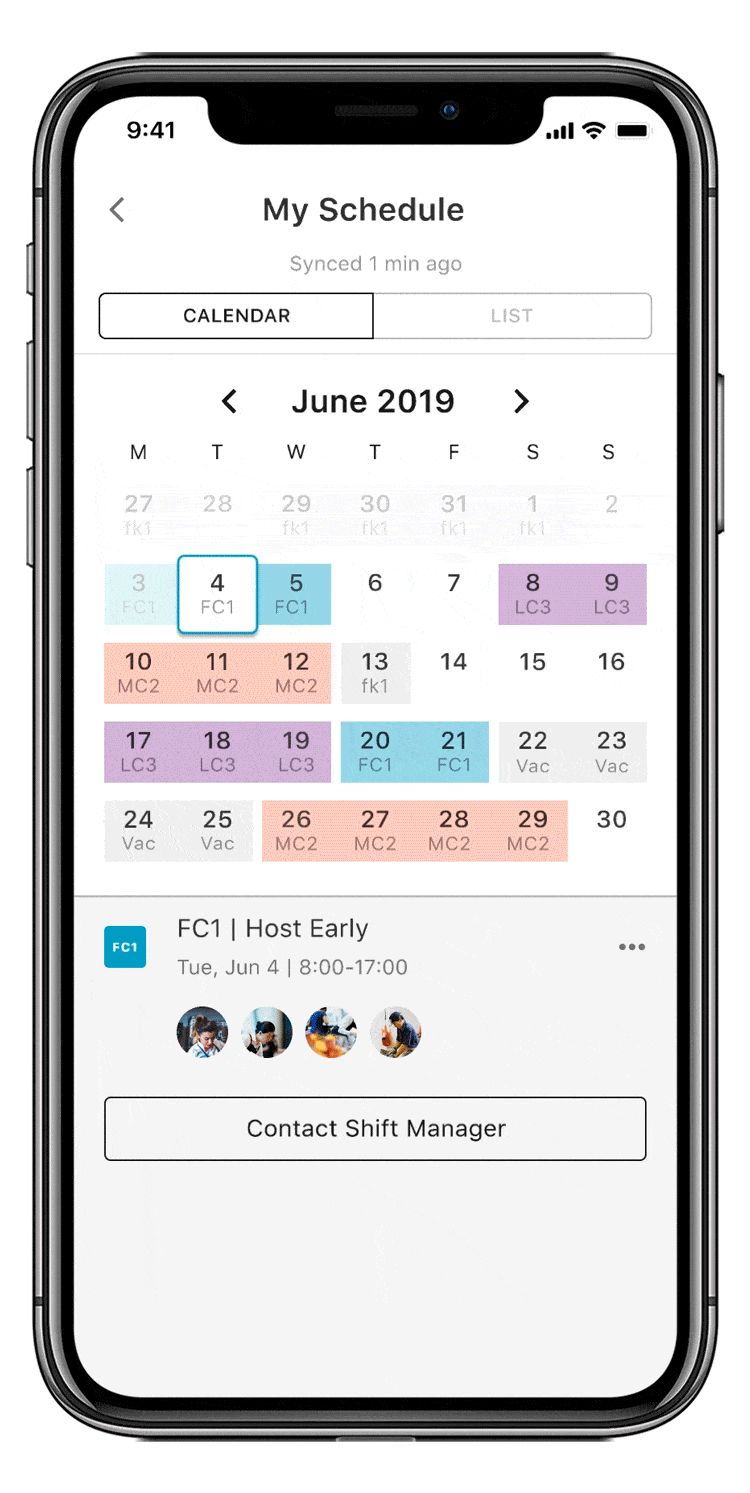Striking that mystical work-life balance is hard enough for 9-to-5 workers. It’s even more elusive when employee scheduling for shift workers leaves them at the mercy of randomly assigned hours and a paycheck that’s different every month.
Now, that’s all changing.
States are passing new laws that protect frontline workforces in industries like retail, hospitality, healthcare, food service, and manufacturing from long shifts, too many hours, or too few.
Known as predictive scheduling, these laws are designed to level the playing field for frontline workers by giving them more reliable scheduling and a predictable paycheck.
What does this mean for companies?
- Improved morale in the workplace.
- Employees will no longer be overworked and can be more productive during every shift.
- Less schedule rearranging and a drastic reduction in absenteeism, which costs companies billions every year, or $3,600 a year for every hourly worker.
Navigating new laws can be complex for companies who risk big fines if they don’t apply them in their workplace.
Employee scheduling software can help companies stay compliant while also streamlining operations with automated scheduling.
If predictive scheduling laws have not been enacted in your area, stay tuned—they could be coming soon.
Here are five new employee scheduling laws you should know about and how an employee communications app can support compliance:
1) Good-Faith Scheduling
When companies hire new employees, they must give them a good faith estimate of what their weekly schedule will look like as well as the number of hours they will most likely work. In the state of Oregon, this notice must be in writing and renewed annually.
While not legally bound to this estimated schedule and median number of hours, managers need to give their employees a valid business reason for any change to this estimate.
With an employee scheduling app, employers can communicate the good faith estimate to employees in writing directly, either through a direct message or document sharing.
ProTip: An employee app can automate schedule functions and help your company stay in compliance with scheduling laws.
2) Advance Notice and Schedule Changes
Predictive scheduling is designed to give employees more routine in their life. Advance notice requires employers to give employees 10-14 days notice of their shift schedule. This law is designed to ensure workers can coordinate their personal lives with work, like time to find childcare.
Employers must pay workers two hours of pay for any shift schedule change with less than 14 days notice, and four hours of pay for a change or cancellation within 72 hours of the scheduled shift.
Through real-time communication over a mobile workforce app, managers can check schedules and communicate any changes instantly with real-time communication directly to the employee.
A read receipt function can ensure the employee received the message, and is digitally documented if there is a dispute on when the message was sent.
3) Predictability Pay
When an employer cancels a worker’s shift, they are compensated for four hours (unless the shift is less than four hours in which case they are often compensated for the entire shift.)
For example, in a restaurant an employee might show up to wait on tables but instead they get sent home because it’s a slow night. The employer owes the employee wages for four hours so they receive some of the pay they were depending on.
In San Francisco, where predictive scheduling laws all began, companies must also identify predictability pay in an employee’s paycheck. Keeping track of hours by regular shift or predictability pay can be managed through a digital workplace’s employee scheduling feature so HR does not have to worry about labor code violations.
Learn how Beekeeper helped RHW Management eliminate paper schedules for employees at over 20 locations.
4) Rest Periods Between Shifts
In the fast food service industry, workers in some states (like New York and Oregon) can no longer do “clopenings”—close the restaurant one night and open the restaurant the next morning—unless there are more than 10 hours between shifts. It’s called the “right to rest”.
If an employee does volunteer to work a shift that is less than 10 or 11 hours (depending on the state) they receive time and a half pay.
Managing employee work scheduling digitally allows managers to keep close eye on scheduling (without having to track down a paper schedule) to make sure they don’t schedule an employee for back-to-back shifts.
ProTip: Implement these employee scheduling changes in your workplace even if they’re not a law in your state just yet.
5) Right to Request
In an effort to create schedules that work best for an employee’s circumstances and personal life, some cities and states, like Seattle, have enacted “right to request” laws.
This means employees have the right to request shift preferences, work location (if a company has more than one property), limit the number of hours they work, and times they cannot work.
Employers are required to make every effort to accommodate these requests.
With direct messaging, employees can contact managers directly through their work app with specific schedule requests. These requests can be stored on the platform for:
Filling Shifts
When a shift opens up, employees have the right of first refusal. This means employers must offer any available shift to their workforce first before seeking outside contractors. Employees have a 24 to 48 hour window to reply.
With mobile employee scheduling software, workers have both a company’s work schedule as well as a contact list for all employees.
A platform like Beekeeper makes this easy with a shift schedules feature that allows employees to swap shifts directly with colleagues and notify managers of the change.

Record Keeping
In some locations, like New York City, companies need to keep track of all employee scheduling data: what shifts employees work, schedule changes, employee schedule requests, and hours offered to employees.
If an employee brings a complaint a company needs to be ready to provide clear and accurate documentation.
An employee scheduling app keeps all data in one place, including any supporting documents. An essential element of these predictive scheduling laws is transparency.
There are plenty of free employee scheduling software options for business, but many won’t have the mobile connectivity that reaches an entire workforce. Make sure you find an employee app that designed for every employee for equal access to scheduling information.
Here are additional ways a mobile team app can support employee scheduling:
- Managers post schedules online with enough notice and employees get notified when their hours are up.
- Schedules can be customized and automated to repeat and changed as needed.
- A team app keeps track of all scheduling information should there be a discrepancy or complaint.
- Managers can notify employees of new scheduling laws over the app.
- Employees can submit schedule requests through direct messaging.
- Employees can handle their own shift management and shift coverage.
- Managers can easily analyze schedules to make sure they’re abiding by all laws.
Even if laws don’t take start until next year, or haven’t been passed in your state just yet, adjust your scheduling system to stay ahead of the curve so you’re already compliant when the law takes effect.
And to give your team a morale boost.







